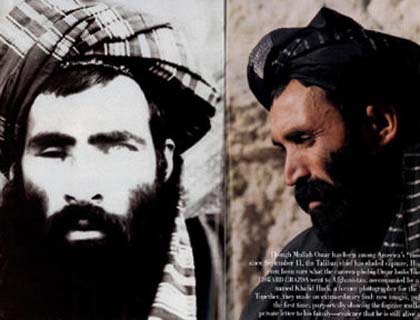Che recent hard-hitting message of Mullah Mohammad Omar, the Taliban's supreme leader, delivered just before the Eid-ul Fitr, is a good yardstick by which we can measure and understand what the Taliban and their leadership's thinking is towards the current situation in the country and the proposed peace talks. The message sits in an uneasy contrast with the news that the month of August became the deadliest for the U.S. military in Afghanistan since 2001. It also sits in
contrast with earlier messages attributed to him in which he was decidedly more interested in warfare than taking a more political approach to the whole issue. If anything, the message is an inauguration of a new face to the elusive chief: a more sober, more politically-oriented and more pragmatic Taliban chief who now talks of negotiations and proclaims the rights of "all" the ethnicities to share in the power in a completely independent Afghanistan.
The message, what it directly says and what it indirectly equivocates, shows more sensitivity on the part of the Taliban's chief to the political aspects of the conflict he and his organization is engaged in. The message, certainly shows, that the Mullah's advisors have done some of their homework and have familiarized the one-eyed chief with the nuances of the situation and the need to be more pragmatic and sensible.
While the message reveals a more pragmatic Taliban's chief, many of the earlier hardline positions of him and his Tahrik-e Taliban are still in place. The Taliban's chief makes it clear for all that all foreign forces should immediately withdraw. More important, Taliban's chief strongly calls for a totally independent Afghanistan in which there is no presence of foreign troops and one without a national government dependent on Western aid and assistance.
Further, what he has said in his message is, by and large, a rebuttal of the hue and cry raised over the seemingly exciting possibility of reaching a peace truce with him and the forces under his command. While his announcement reveals a significant shift in his hitherto hard line stance and attitude by proclaiming a commitment to greater political cooperation, it also makes it clear that under the present conditions, reconciliation will remain in a dead-end.
As widely expected, the core of the Taliban in general and its leadership in particular including the chief himself, as revealed in the message, strongly insist on the precondition of withdrawal of international coalition from Afghanistan before they can start any sort of serious talks. His insistence on a vision of Afghanistan is highly nationalistic, ruling out any possibility of an Afghanistan that is in close partnership with the West. His references to the present government in Afghanistan are highly dismissive. It is a good indication that he cannot be at ease
with the current order in the country.
In the wake of the widely-publicized message, the U.S. was quick to denounce Mullah Mohammad Omar's preconditions, once again affirming that a complete withdrawal of foreign troops is simply unthinkable.
As evident in the Mullah Mohammad Omar's message, the progress in serious talks and negotiations with Taliban has had little progress so far, limited to the issues of prisoner transfers. What has been interesting is that Americans have been keen more on exploring direct linkages with the Taliban hierarchy than doing that through Pakistani or Afghan governments. Pakistan, on more than one occasion, has directly or indirectly reminded to Americans that it is them who know the Taliban better and therefore the U.S. must seek their help as well.
The message comes at a time when less than a month ago, Taliban shot down an American Chinook helicopter killing 31 American troops and reportedly 7 Afghan soldiers. The incident was among the deadliest for American military in Afghanistan since the operation Enduring Freedom began and so did their military engagement in Afghanistan. Among the casualties were around 20 elite Navy SEALS forces whom were credited with executing the Abottabad operation and killing of Osama bin Laden.
This single incident of high casualties contributed to making the month of August the deadliest for the U.S. military since 2001. On the other hand, the casualties among the Afghan National Security Forces have been steadily on the rise with the Afghan National Police (ANP) bearing the brunt of the Taliban's bloody resurgence. According to reports, over the past two years and on average, every day 5 soldiers from Afghan National Police have laid down their lives in the cause
of defending the country against the Taliban and their allies. This is a worrying situation and more so given the fact that the security responsibilities of more areas in the country will be handed over to Afghan forces in the coming months. When the fatalities of Afghan National Police is already high, there is almost certainty that it will climb further as more and more areas will be transitioned to
Afghan security lead.
The message of the Taliban's leader and what he announces as his vision for the future of the country do not bode well for the future of peace and political stability in Afghanistan. It is, in more ways than one, is a clear indication that the conflict in Afghanistan is set to become a long-drawn war of attrition lasting indefinitely into the future. How the government in Kabul will receive the message and its implications will be known in the days and weeks to come. But for now, the message insures that the peace talks will remain in the current dead-end. The future still looks uncertain.

